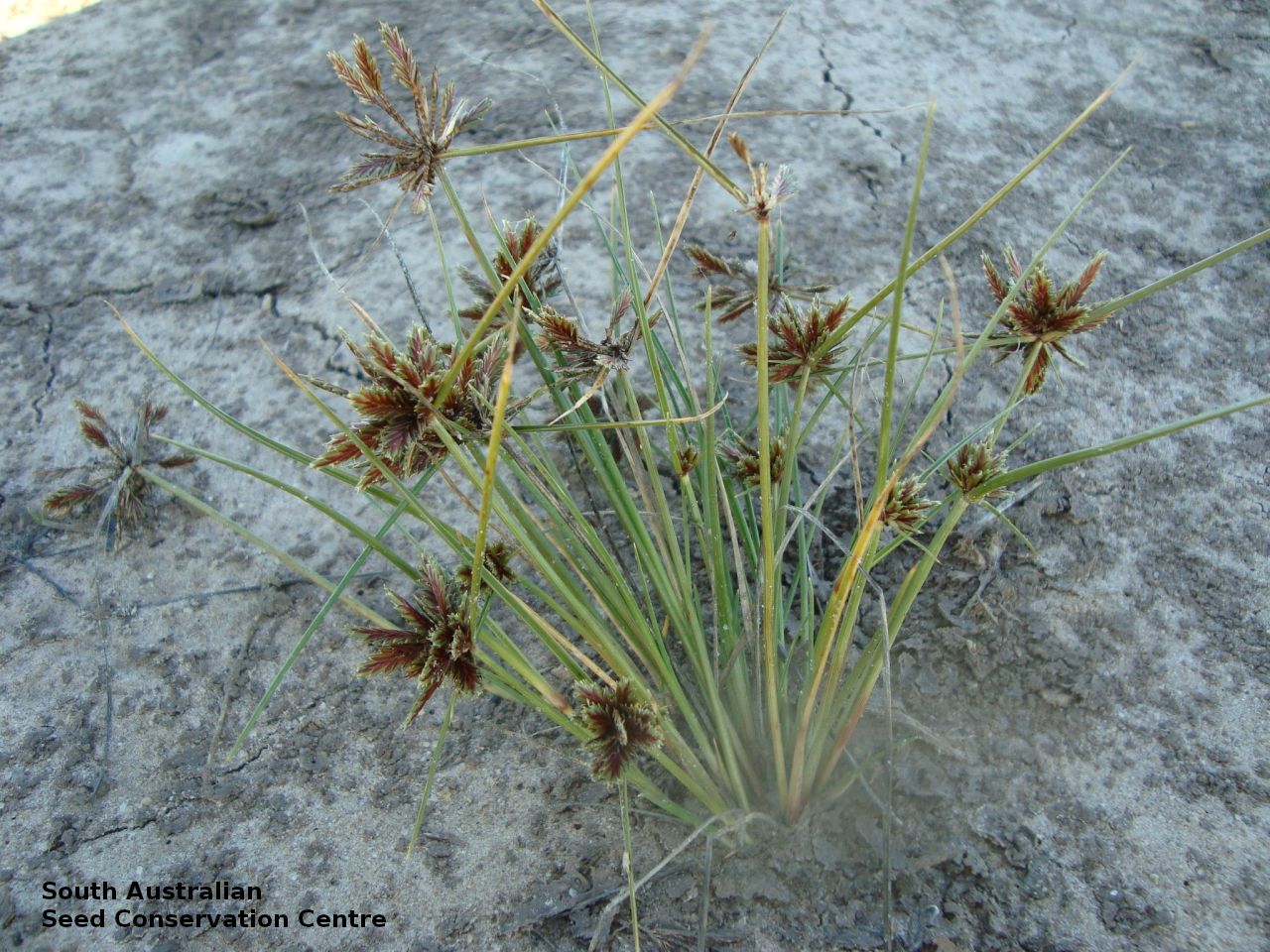
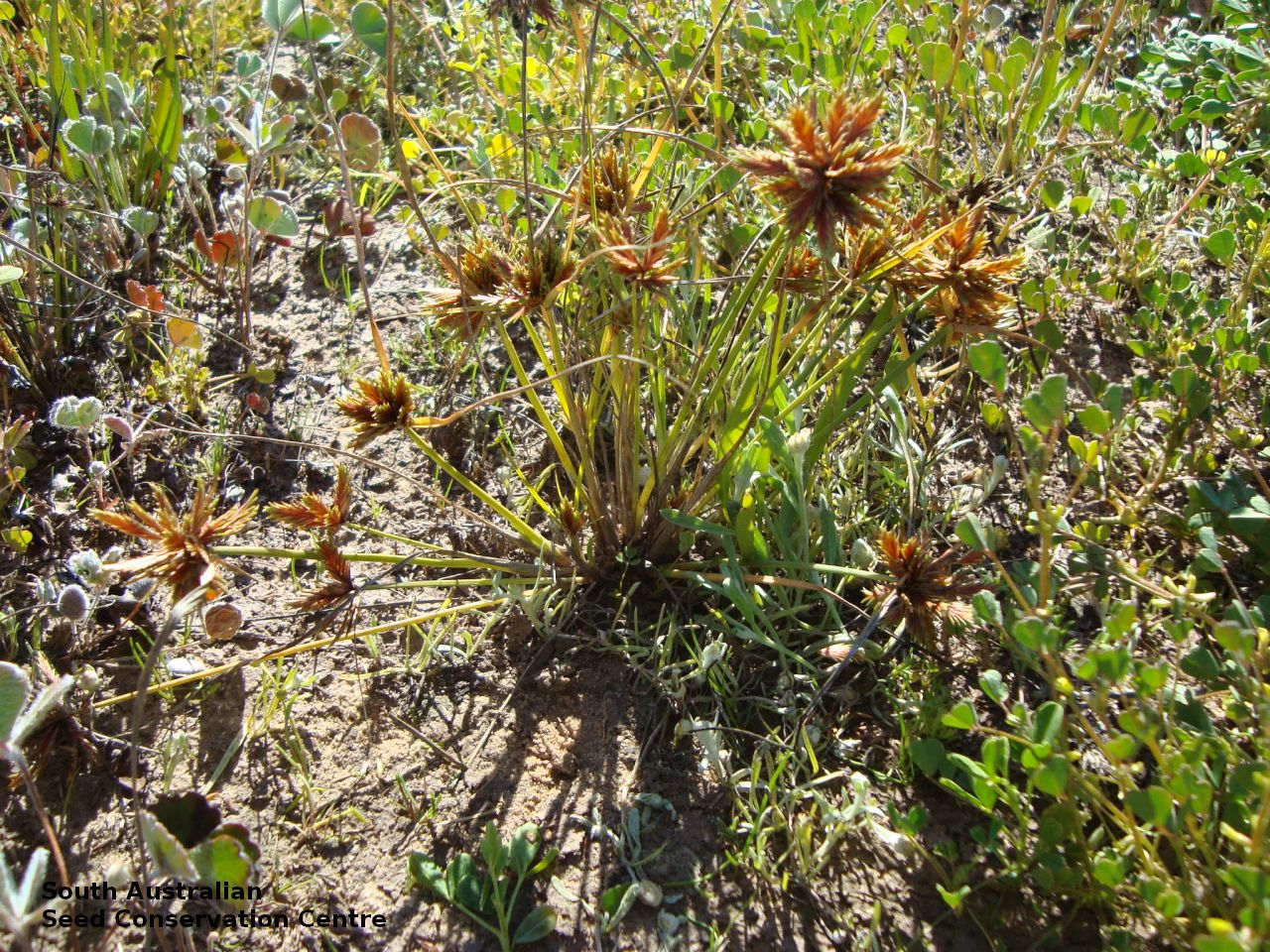
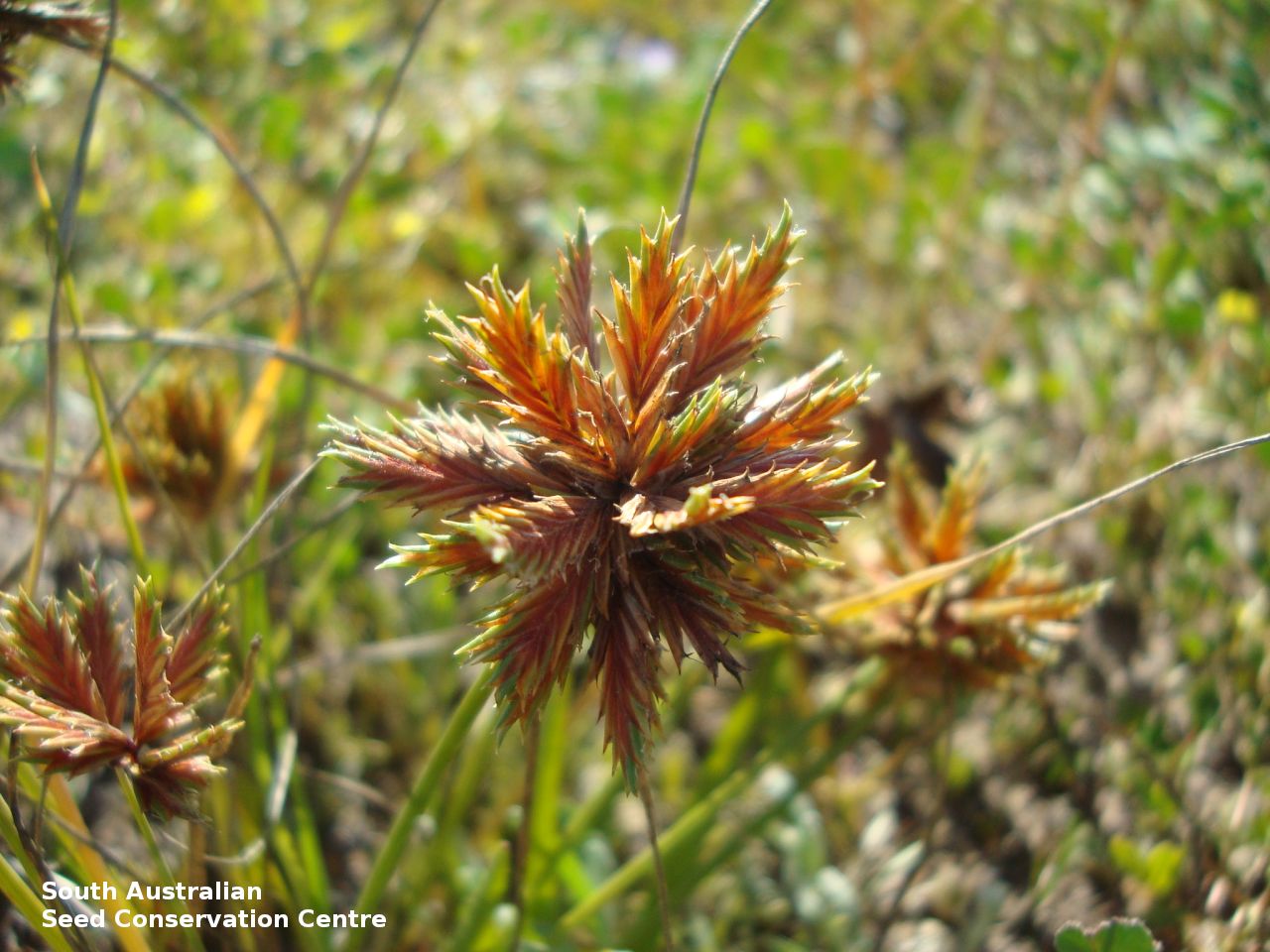
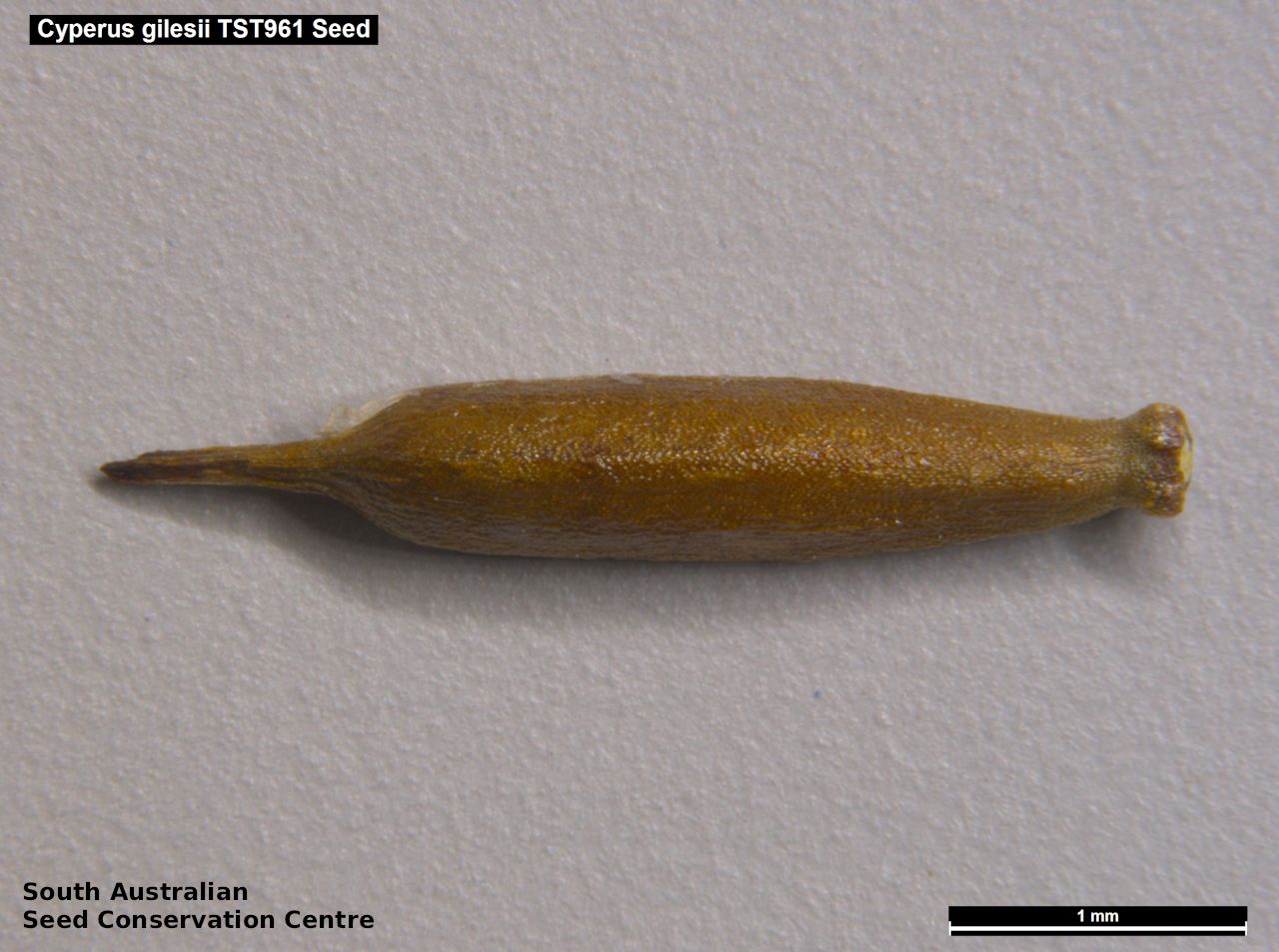
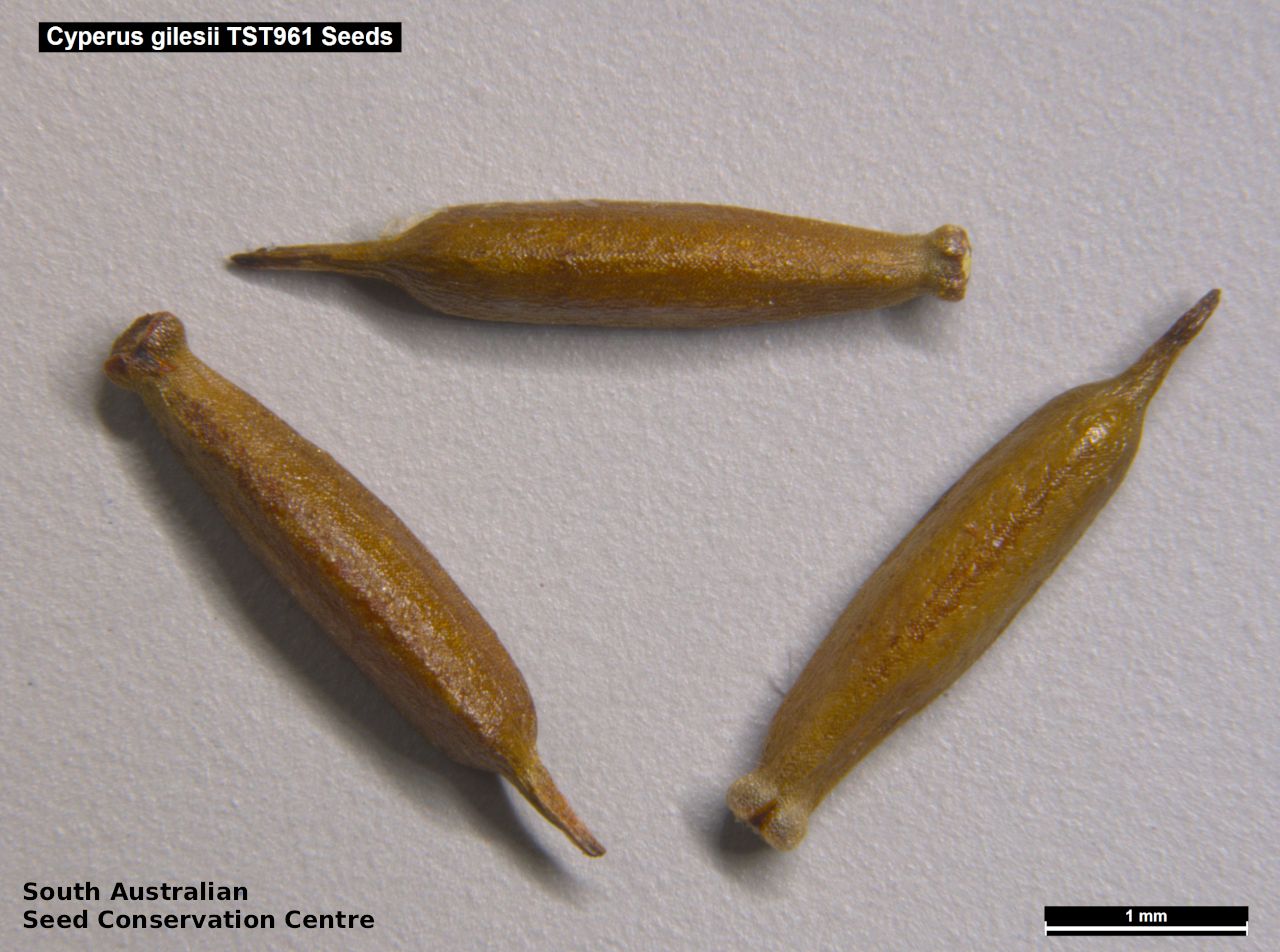
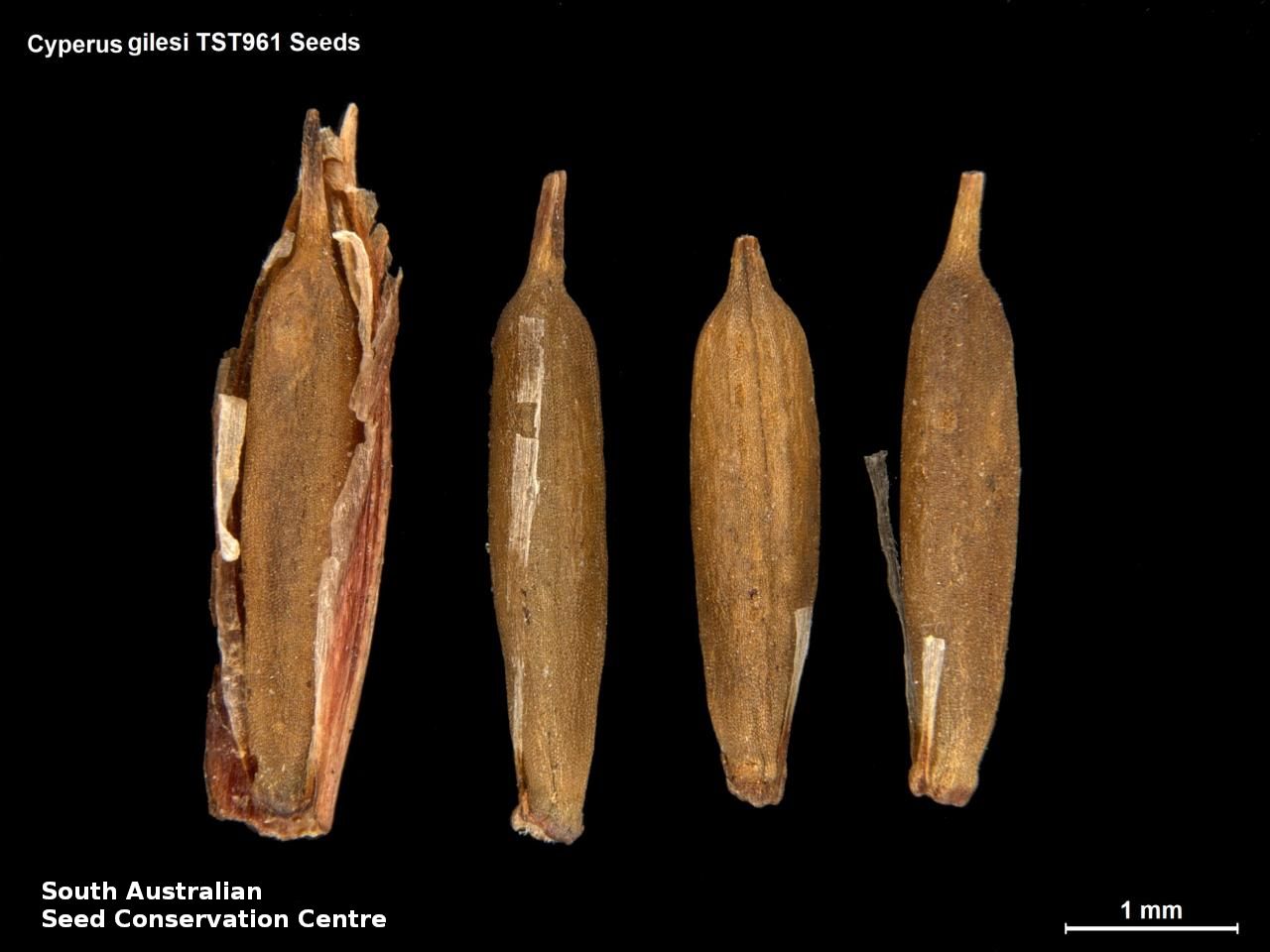

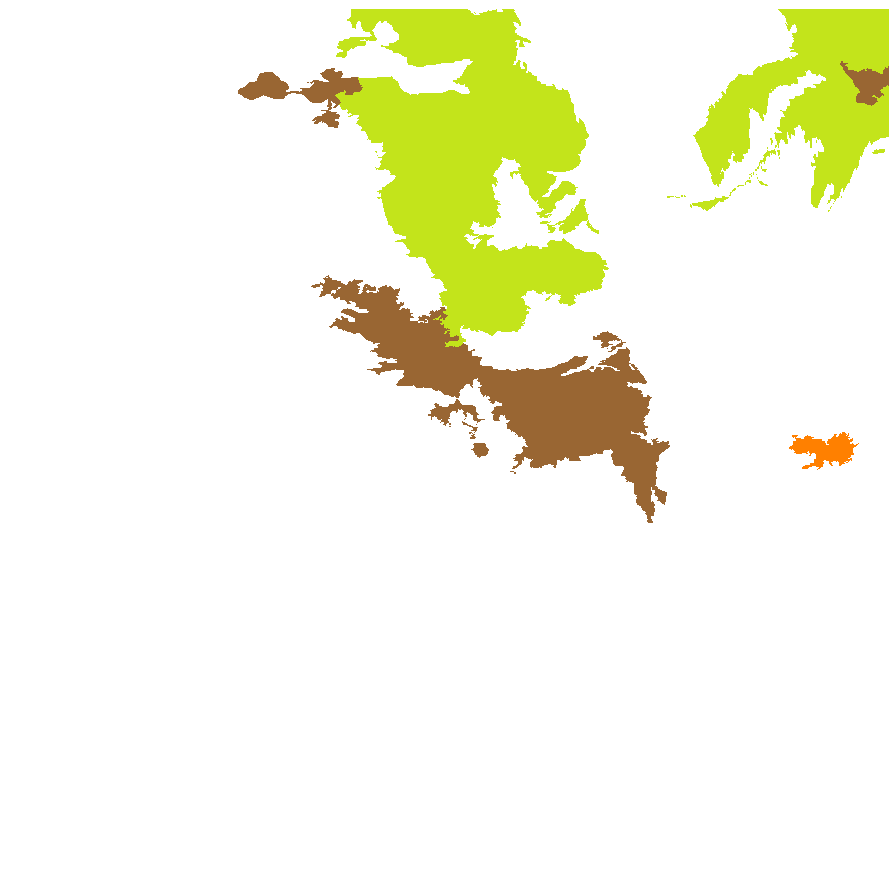
Botanical art
Common names
Giles' Flat-sedge
Etymology
Cyperus from the Latin 'cyperos' and derived from the Greek 'kypeiros', an ancient Greek name used by Homer and Theophrastus for several plants of this genus. Gilesii named after William Ernest Powell Giles (1835-1897), an Australian explorer who led five major expeditions in central Australia.
Distribution and status
Found in the north and north-east part of South Australia growing in ephemerally wet situations such as inland stream banks. Also found in Western Australia, Northern territory, Queensland and New South Wales. Native. Common in South Australia. Rare in Western Australia. Common in the other States.
Herbarium regions: North Western, Lake Eyre, Gairdner-Torrens, Flinders Ranges, Eastern
AVH map: SA distribution map (external link)
Plant description
Slender annual sedge to 30 cm high. Stems usually tufted, erect, slender; trigonous, smooth but prominently striate. Leaves shorter than the stems, 1-4.5 mm wide, margins sparsely scabrous; bracts 2-4, leaf-like, the lower longer or much longer than the inflorescence. Flower-spike a simple umbel or reduced to a head, the rays up to 5 in number; slender but rigid, to 6 cm long; spikelets approximate but not quite digitate, few to several on each ray; bright-brown, chestnut, or golden-brown, 15-30-flowered; lanceolate to linear, rather acute, very flat, c. 10-30 mm long, 2.5-4.5 mm wide; rhachilla wingless or nearly so; glumes rather dense but soon spreading and their margins inrolled; 4-5 mm long, prominently nerved with a finally recurved mucro to 1 mm long; style 3-branched. Flowering between September and April. Fruits are flat, golden brown fruit-head in dense clusters. Seeds are brown long oblong seed to 5 mm long and 1 mm wide. Seed embryo type is capitate.
Seed collection and propagation
Collect seeds between January and December. Collect fruits by picking off the mature heads, those turning golden brown and come-off easily. Place the heads in a tray and leave to dry for one to two weeks. Then rub the heads with a rubber bung to dislodge the seeds. Use a sieve to separate any unwanted material. Store the seeds with a desiccant such as dried silica beads or dry rice, in an air tight container in a cool and dry place. From two collections, the seed viability was high, ranging from 90% to 95%.
| Location | No. of seeds (weight grams) | Number of plants | Date collected | Collection number Collection location | Date stored | % Viability | Storage temperature |
|---|---|---|---|---|---|---|---|
| BGA | 10,900 (8.43 g) | 50+ | 12-Aug-2010 | TST961 Lake Eyre | 1-Jan-2012 | 90% | -18°C |
| BGA | 2,700 (0.93 g) | 20 | 11-Aug-2010 | DJD1848 Lake Eyre | 1-Jan-2012 | 95% | -18°C |
| BGA MSB | 5,600 (1.4 g) 5,600 (1.4 g) | 30+ | 15-Oct-2016 | JRG494 Lake Eyre | 1-Nov-2017 | 90% | -18°C |
| BGA | 22,000 (3.88 g) | 50+ | 21-Sep-2016 | DJD3449 Lake Eyre | 1-Nov-2017 | 85% | -18°C |
Number of plants: This is the number of plants from which the seeds were collected.
Collection location: The Herbarium of South Australia's region name.
% Viability: Percentage of filled healthy seeds determined by a cut test or x-ray.